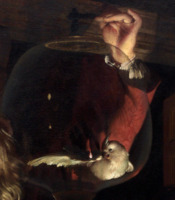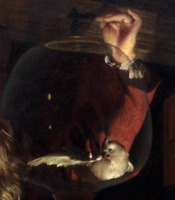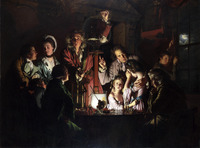Items
Site
The Medicine Chest
keywords is exactly
canary
-

Silicosis
A gold miner using a rock drill with a water spray in an attempt to prevent the occupational disease silicosis, caused by dust inhalation. -

What UCT is not telling its first years
On the 19th of January 2015, an article appeared in the Cape Argus titled 'What UCT is not telling its first years' written by Dr Siona O’Connell, a staff member of the Centre for Curating the Archive, and lecturer at the university. In it she wrote about the absence of transformation in the university, evident in its lack of black academic staff, describing the campus as "mired in unarticulated tensions and divisions, many of them pivoting on race” and “guarded by the Rhodes Memorial – a significant imperialist edifice” that continues to shadow it “in many overt and covert ways” "(O’Connell 2015). In the article she pinpoints that even though, as first years, they will most certainly be greeted by the statue of Cecil John Rhodes overlooking the rugby field during their tour of the campus, their chances of being taught by a black professor during the full span of their degree, will be incredibly slim… -

Canary
Sentinel species are used to detect risks to humans by providing advance warning of a danger. The idea of placing warm-blooded animals in a mine to detect carbon monoxide was first proposed by the Scottish physiologist John Scott Haldane in 1913. Canaries (Serinus canaria ) were considered the best sentinel animals for detection of dangerous gases because they were found to be more sensitive than other species evaluated (Pollock 2016:386-387). -

Flight
A chorus of juvenile heartbeats affected by Atrial Septal (ASD) and Ventricular Septal Defects (VSD), Patent Ductus Arteriosus(PDA), and Aortic Valve Stenosis (AVS), transposed to a higher frequency to simulate birdsong -

An Experiment on a Bird in the Air Pump
In Joseph Wright’s 'An Experiment on a Bird in the Air Pump' (1768), he depicts the re-enactment of Boyle’s famous experiment. Contrary to the restricted viewing of this experiment in the confines of Gresham College by the gentleman of the Royal Society, this audience includes a variety of individuals of different ages and gender, exhibiting a mixture of emotions: a young girl worriedly watches the fate of the bird, while another is comforted by her father, seemingly too upset to view the rest of the experiment; a young boy and middle-aged man look on with absorption, while two young lovers only have eyes for each other; lastly an old man meditates on a skull in a jar, and the scientist stare out at the viewer, and not at the experiment.


